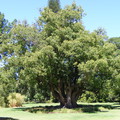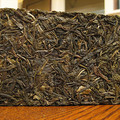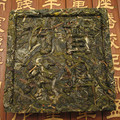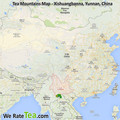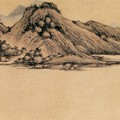Puerh Paste - Glenn McKenna
„
the creation of Puerh Paste from within Yunan Province, China. basically, it's similar to making hash or hemp oil. they brew the tea, then continue to sift it through smaller and smaller sized hole mesh bags until the final mixture is a paste. seems to me if there's a direct way to go tea infusion, this might be it.
“
Video Tags: Pu-erh, China, Tea production
- Discussion: 0 comments
- Write a comment
Teas - Pu-erh
Lao Banzhang 2004 Bamboo Tube
 1 review
1 reviewLao Banzhang 2004 is a pu-erh pressed into bamboo tubes. Mighty and rich tea soup...
2014 Jingmai Gu Shu Huang Pian
 1 review
1 reviewThis tea is from Jingmai Da Zhai, grown in Da Ping Zhang area, and it is considered to...
2014 Autumn Di Jie Village Old Tree
 0 reviews
0 reviewsDi JIe is one of few villages around Bingdao. This maocha come from late September...
Yiwu 1999 maocha
 1 review
1 reviewYiwu 1999 maocha is a well stored tea in Taiwan. Loose leaves, maocha, is not stored...
2006 Haiwan Certified Organic Pasha
 1 review
1 reviewTall and straight forest - Meng Pasha Pasha in the Aini language means tall and...
1997 CNNP Big Red Mark Raw Puerh Cake
 1 review
1 reviewThis cake is called "Da Hong Yin" or Big Red Mark. It's a blend from Banna area tea...
Quotes - Pu-erh
„Pu-erh shape - Square - A flat square of tea, usually in 100g or 200g sizes, they often contain words pressed into the square.“
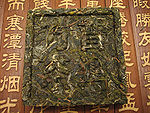
Quotes Tags: Pu-erh
Video - Pu-erh
Teas
Kabusé Okuyutaka 2012
 2 reviews
2 reviewsPacking: vacuum, 50 grams, packaged in Japan Tea is an original packaged in Japan and stored at low...
2006 Longyu Brand Bulangshan Jin Cha Raw 250g
 1 review
1 reviewRaw Jin Cha is especially for Tibetan market, used to be mixed with milk, it is very helpful for the...
2013 Chawangpu Bada Zhang Lang Xiao Bing Cha
 1 review
1 reviewNicely processed and completely manually produced tea from Bada mountains. The tea is coming from Zhang...
Theme
Tea by region
We will help you with tea selection.
Do you like quality loose tea?
We will help you to find the right one for you. Be inspired by tea ratings of other tea lovers. Rating stars could help you.


Review your cup of tea.
Review the tea you are drinking and help other tea lovers to find the right cup of tea.



Quotes
„If you let go of things, your body is not stressed; if you contrive no artificiality, your mind is naturally at peace. Serenity and lightness develop day by day, while involvement in objects grows thinner day by day. Your actions become further and further from mundanity, while your mind becomes closer and closer to the Way.“



 Shops
Shops Share on Facebook
Share on Facebook






